A monthly travel journal from two full time RV nomads about RV living and full-time travel.
--> The July Issue
Hello from Door County Wisconsin!
We arrived in Door County just a few days ago and are in love with the area. I'm excited to tell you more about this charming place in next month's issue!
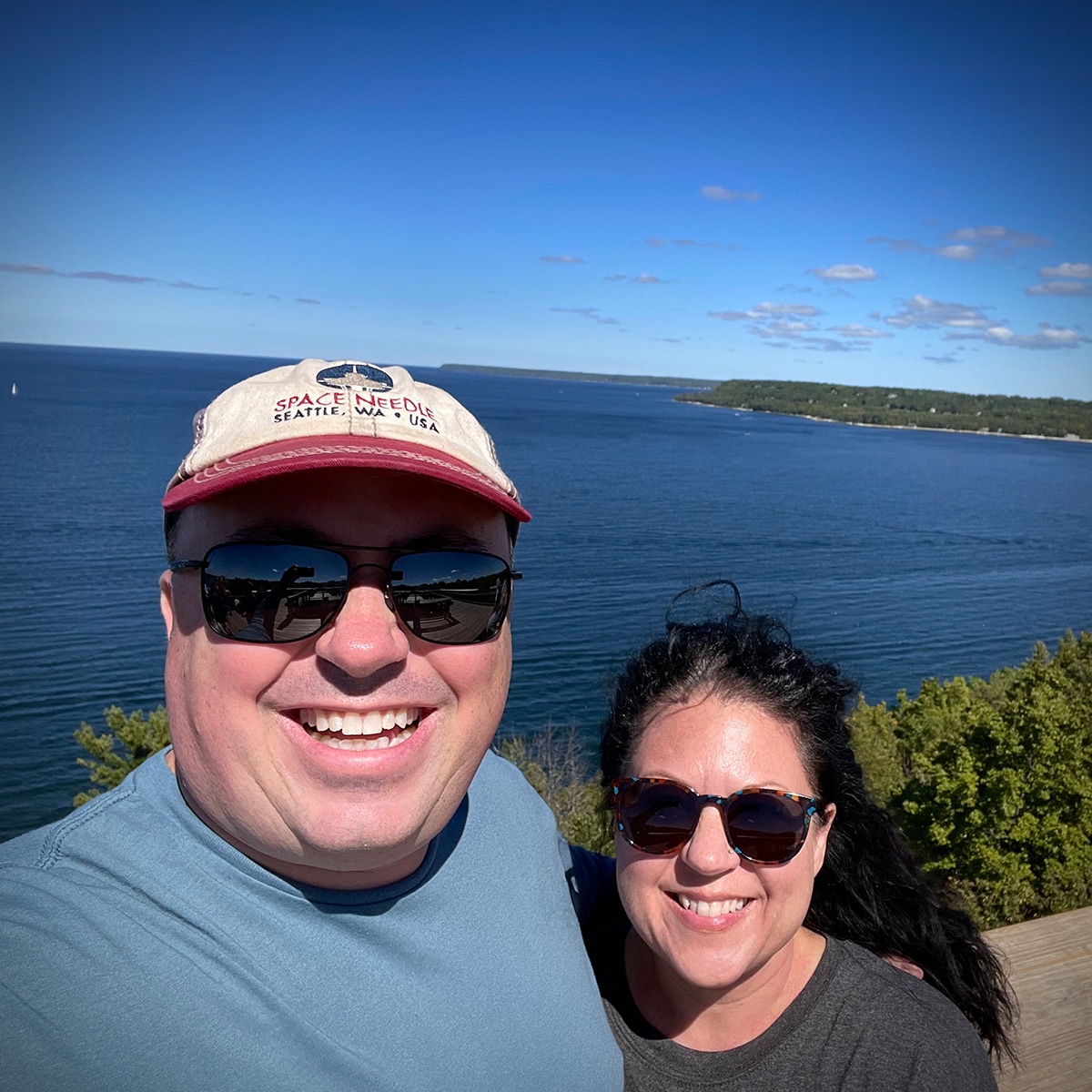
Although we've just arrived in Door County, we've been in Wisconsin since July 30th. We've learned a lot about this beautiful, quirky state, and share some fun facts about Wisconsin below. But first...
One of the questions we get asked the most often is, "How do you decide where you're going next?" After spending the past few weeks planning our travel schedule for next year, I wrote down a few things I've learned about planning a year of travel, and share them with you here.
How We Plan a Year On The Road
There are a lot of different ways to approach full-time RV life, and after 2 ½ years on the road, we've learned a lot about what works for us. Since May of 2020, we've...
- Lived in 19 states
- Put nearly 25,000 miles on our 5th wheel
- Stayed in 11 state parks, 32 RV parks, and 8 different dispersed camping/ boondocking locations
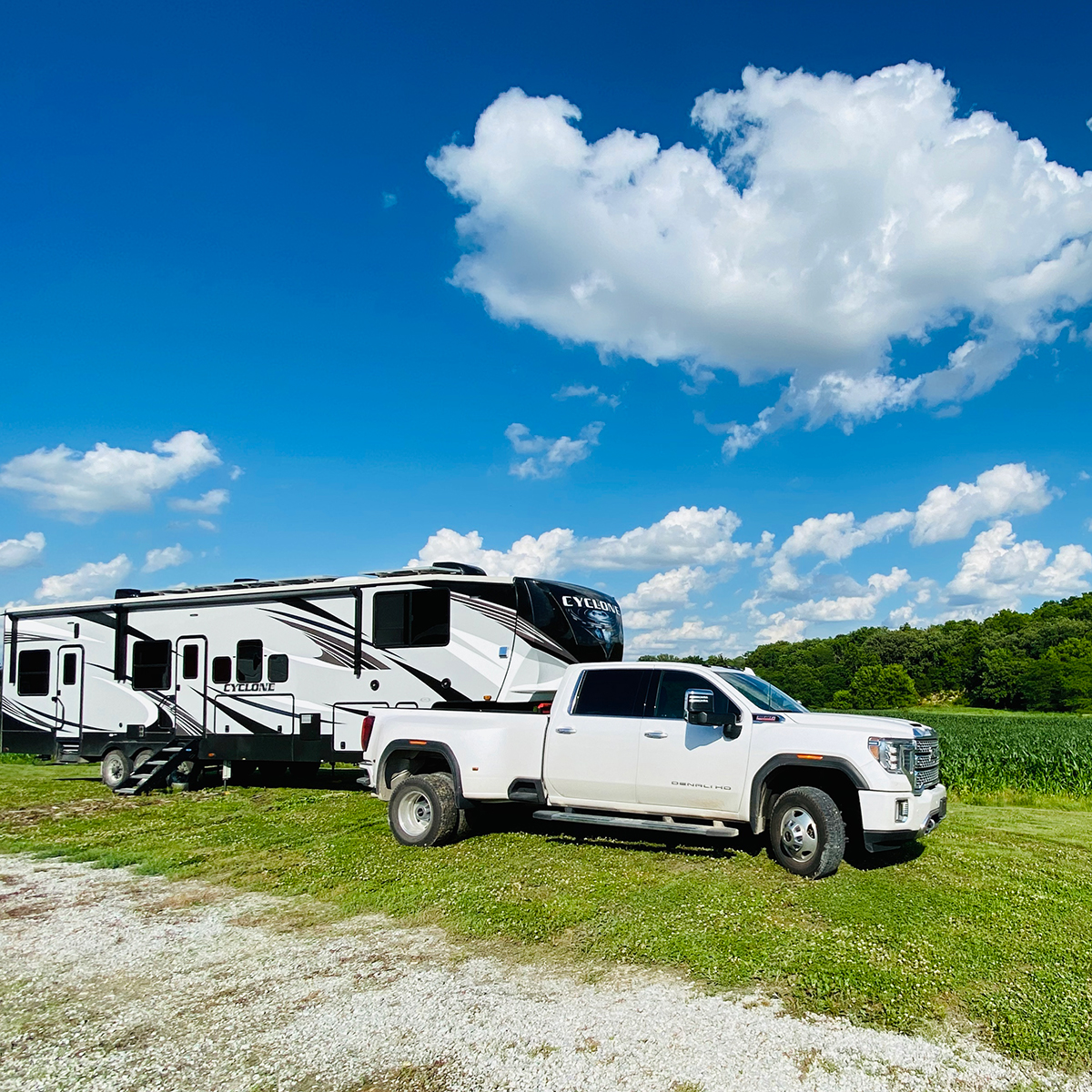
In the first few months of RV life, I learned the value of planning ahead If...
- You have a big RV, and
- Some of the places you want to be are popular destinations, and
- You want to stay there for more than a couple of days, and
- You need to be settled and connected to the Internet come Monday morning so you can do your job.
RVing has become more popular than ever in the past couple of years, and snagging a spot at the most beautiful campgrounds can be difficult.
I’ve waited with bated breath, my finger poised over the “make a registration” button, for a registration window to open so I could snag one of the few spaces large enough to accommodate us in an amazing-looking campground and still not be able to secure a spot for the length of time we want to be there.
But, most of the time planning ahead works out well, so I keep doing it.
I plan our whole year in advance, leaving some wiggle room in there so we can change our minds from time to time, which we sometimes do. What follows is a bit of insight into my process, some of the tools I use, and a handful of tips about how to plan a year on the road.
Want to see where we've been over the past two years? View our 2021 Travel Schedule and our 2022 Travel Schedule.
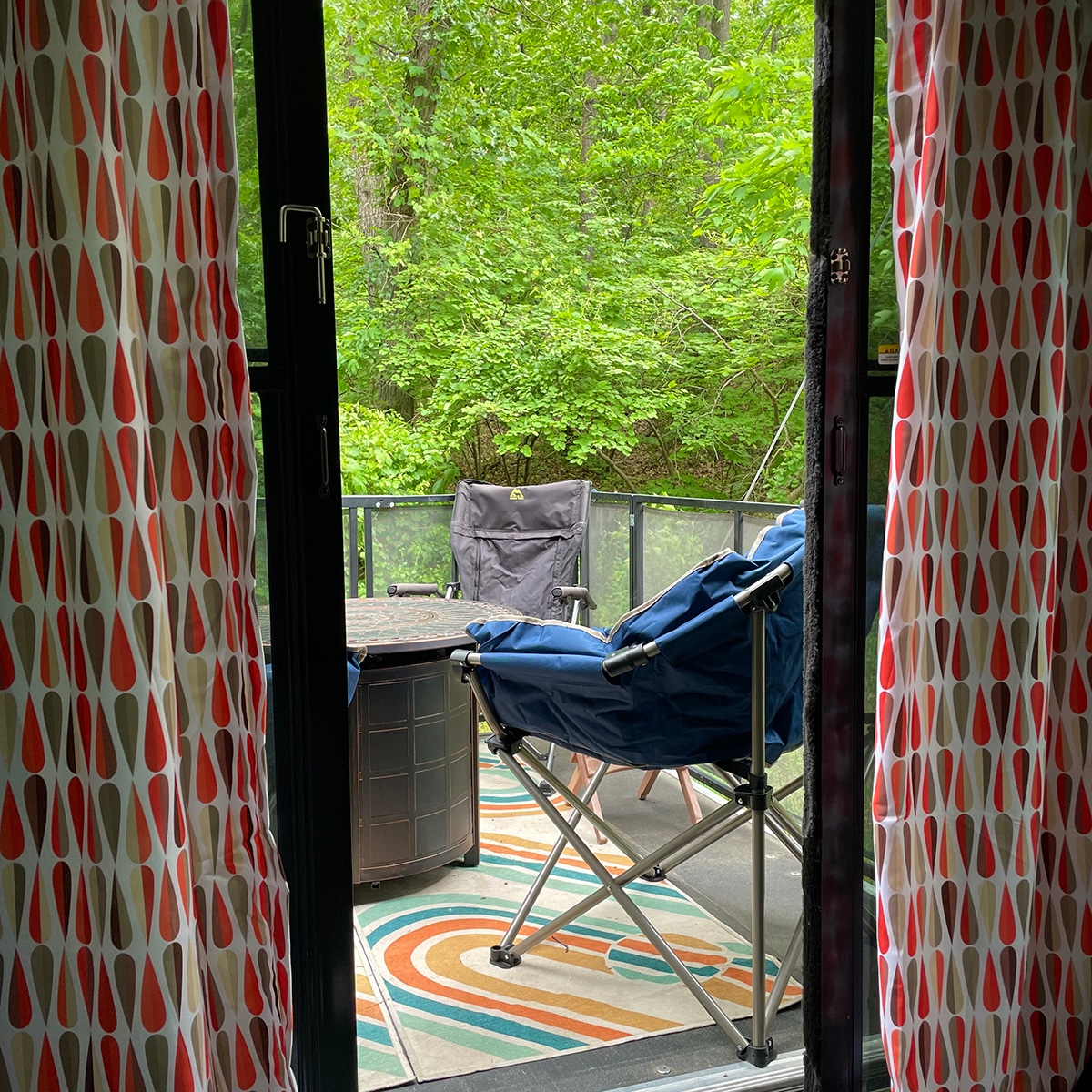
#1. Organize the Entire Year of Travel Around Specific Priorities
Understanding what our main priorities are for the year is probably the most important consideration for me when planning our itinerary.
For example, when planning this year, I knew we wanted to spend the first part of the year in San Diego and be back in Colorado for some important events in May. After determining where we wanted to park ourselves in Southern California and for how long, I filled in the gaps between leaving SoCal and arriving in Colorado.
The "in-between" destinations were influenced by the priorities of staying where we wanted to stay in California and getting back to Colorado by early May. Because we wanted to stay in an expensive resort campground in San Diego for 7 weeks, we balanced out the budget by boondocking and staying in a couple of relatively inexpensive campgrounds on the journey back to Colorado.
Besides specific destinations, other priorities influence the plan. After moving around a lot in 2021, we decided that moving less often was a priority for 2022.
As a result, I chose locations central to many places we might want to visit and RV parks where we could stay for 3-7 weeks at a time. This eliminated most State Campgrounds, which we love, but which also generally have a 14-day limit.
Next year's travel plan reflects a different set of priorities. We initially determined to spend the summer in Maine. After planning the entire year around that destination, we looked at the itinerary, which included several long stretches in RV Resorts, and determined that we wanted to spend less time in resorts and more time boondocking and in State Parks.
That decision was based in large part on wanting to control our budget, which is its own priority and worthy of its own spot on this list.
Regardless, I scrapped the plan and started over with new priorities, and that has significantly changed the shape of 2023.
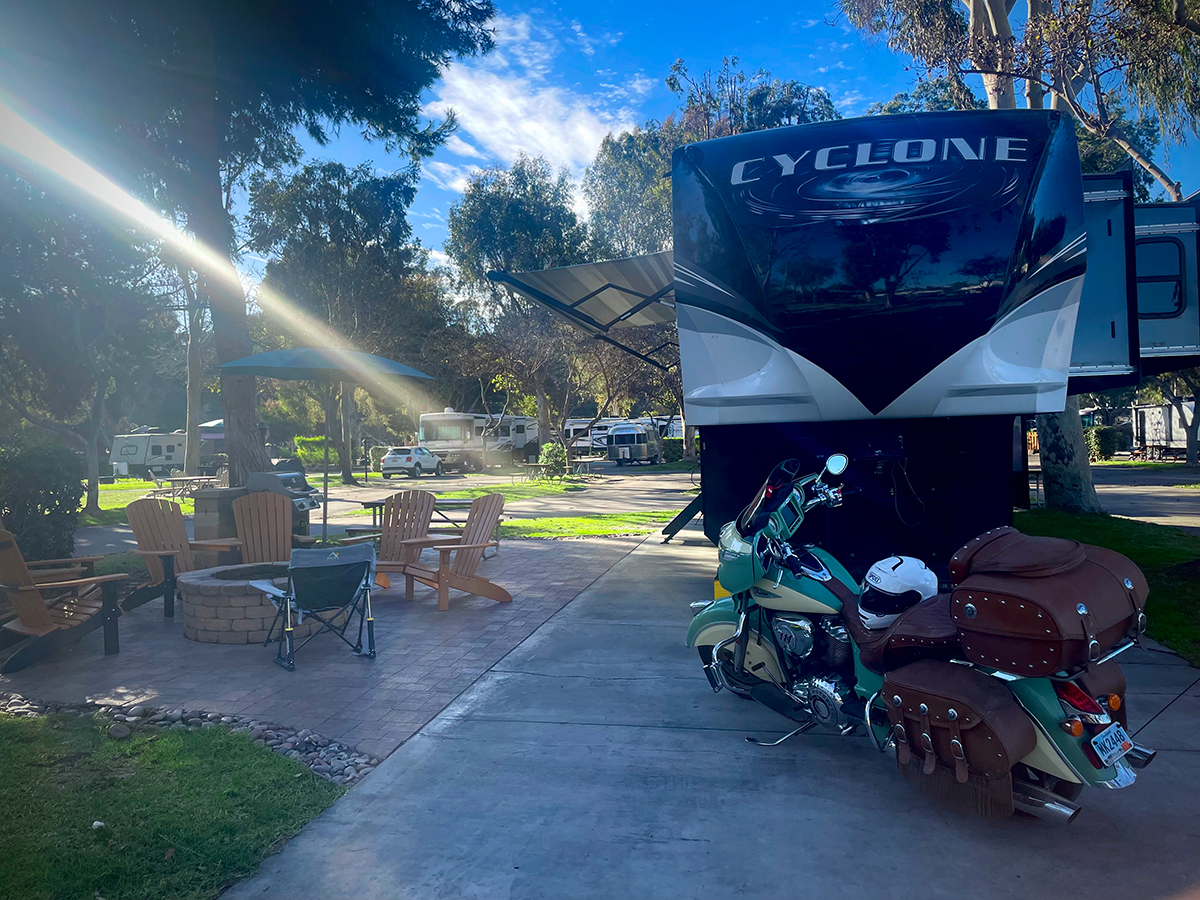
#2. What's the Year's Travel Budget?
One thing we hear often from people we meet on the road is, “Living in an RV must be an inexpensive way to live.” We usually respond, “Not the way we do it.” 😂
There is a tremendous budgetary range amongst full-time and part-time RVers. You can easily spend between $1-2k a week at an amenities-rich RV Resort. Or, you can boondock for free.
In between those two options are RV parks and state campgrounds that run anywhere from $5 - $75 a night (or more), often with varying degrees of hookup options (water, sewer, and electric).
So, having at least a loose idea of how much we want to spend in a year is a major influence on our choices.
In 2022, saving money was not our top priority. So, while I did try to balance expensive campgrounds with boondocking and short stays at state campgrounds, we mostly stayed where we wanted regardless of the cost.
In 2023, we’re shifting the priority and want to spend less money AND utilize our rig’s capacity for being fully self-contained. Steve has invested a lot of time and energy installing solar, upgrading our electrical systems, adding insulation and other cold-weather protections, and acquiring tools that help us stay off-grid for as long as we like.
We want to put all of that to work for us next year. This means a lot more boondocking and dry camping. And that brings me to the next consideration in planning RV travel…
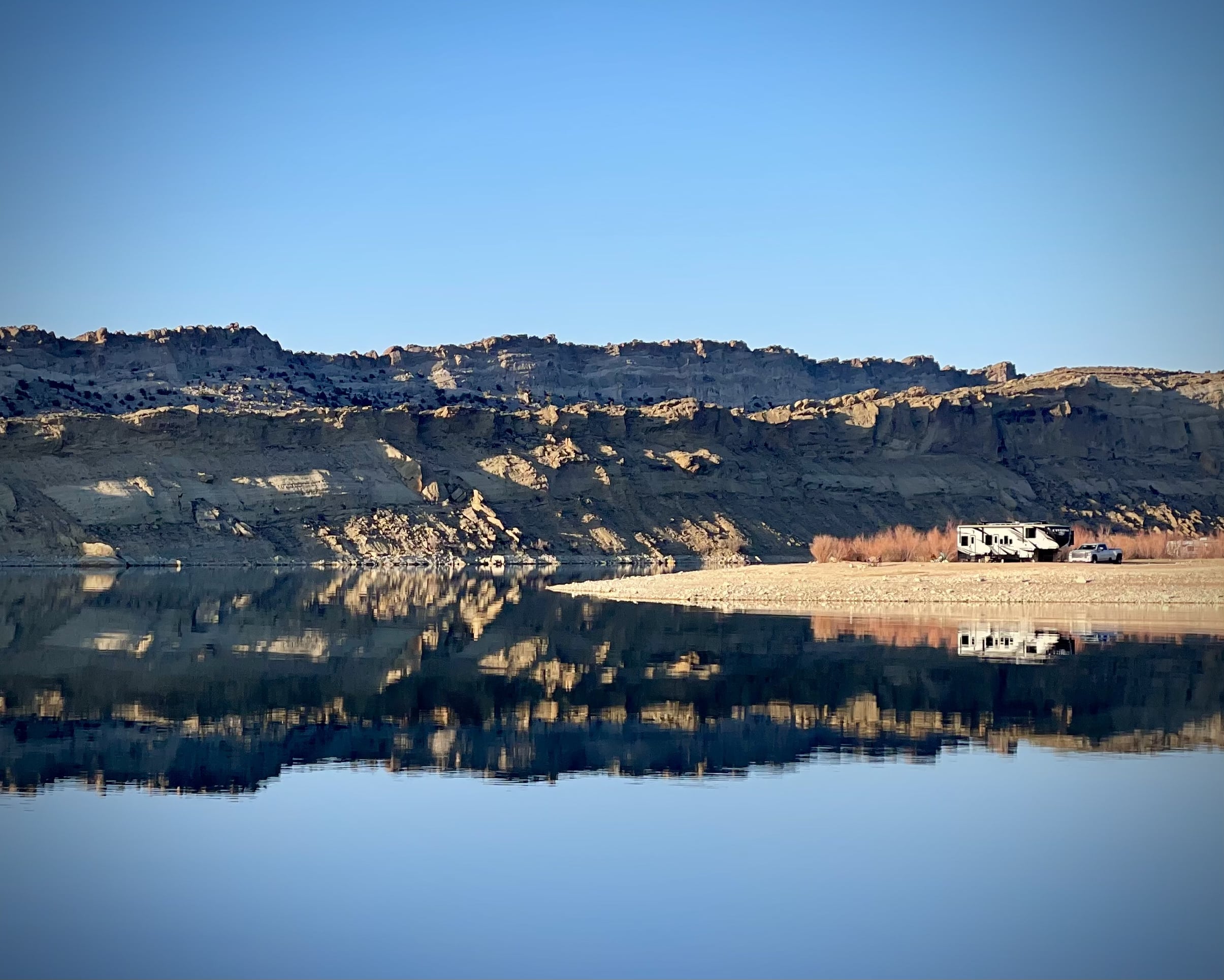
#3. Full Hookups, Some Hookups, or No Hookups?
Campgrounds range from full hookups to partial hookups to no hookups (dry camping).
- Full hookups = the ability to connect your RV to city water, sewer, and electricity.
- Partial hookups usually means water and electric, but can sometimes mean electric only or water only.
- Dry camping and boondocking = no hookups at all.
What’s the difference between dry camping and boondocking?
Dry camping refers to camping at an organized campground that doesn’t include any hookups. Boondocking refers to camping on public land, or on private land that’s open to boondockers. It involves showing up to an open piece of land, usually BLM land, and finding a place to camp. Read more about boondocking here.
Some RVers, both full-time and part-time, boondock almost exclusively. Others only stay at full-hookup parks. We tend towards a mix of everything.
There are a lot of conveniences that come with an amenities-rich RV park! But it's also nice to know that we have what it takes to stay at campgrounds with partial or no hookups.
- In addition to solar power, we have a 100-gallon fresh water tank, and waste tanks that hold a total of 180 gallons of waste.
- In 2 ½ years of full-time RV living, we’ve learned that we can last almost 2 weeks before having to dump our waste tanks and fill our fresh water supply.
- If we have sun, we have plenty of power. If we don’t have sun, we have a generator to charge our batteries.
- We have a portable waste tank in the bed of our truck that we can use to empty our RV waste tanks and collapsable containers that we use for fresh water. This allows us to dump and refill our fresh water supply while leaving the trailer where it is.
Living in a rig that's so self-contained means we have the freedom to let other priorities, like budget and location, dictate our choices. Our travel decisions are dictated by where we want to stay more than where we have to stay.
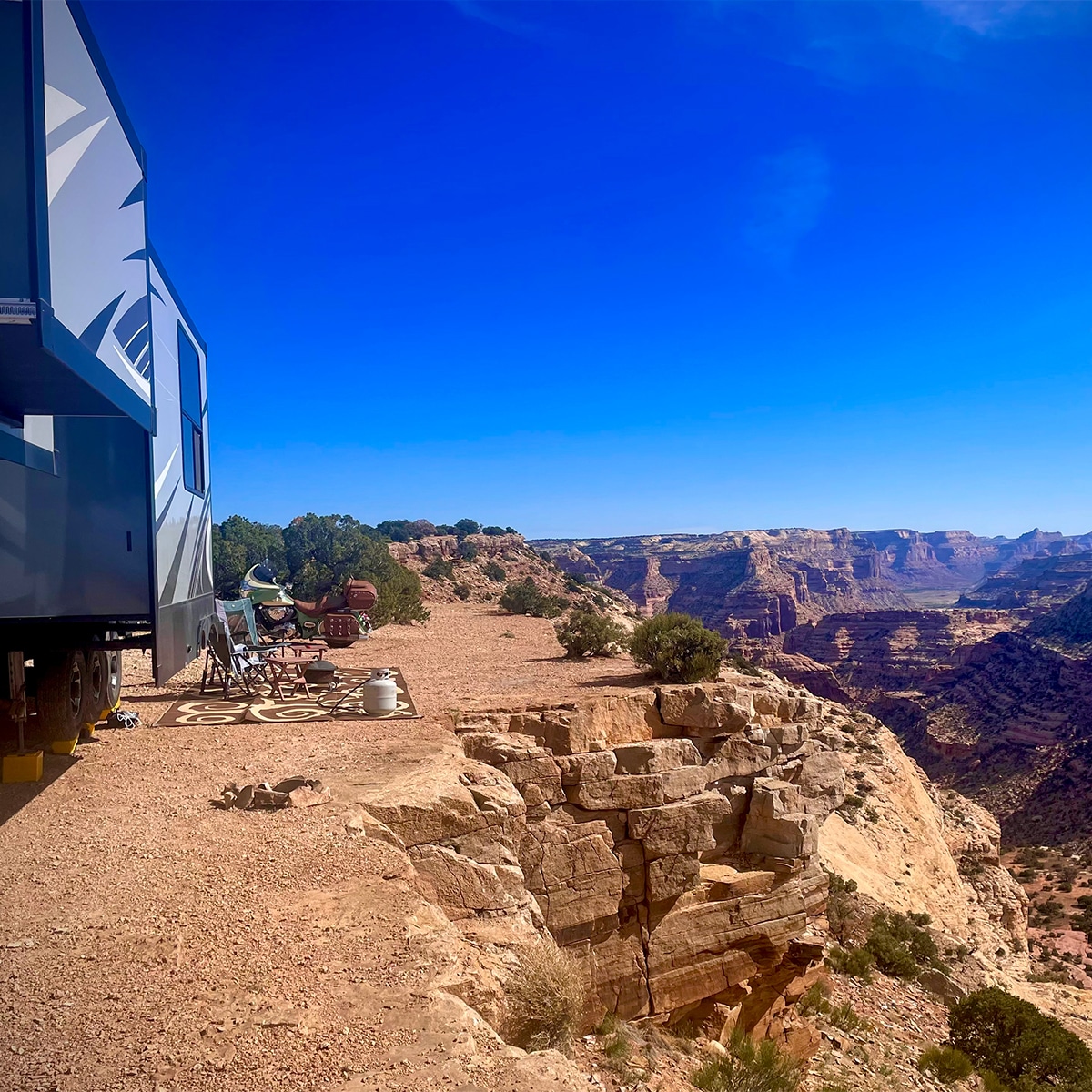
#4. Internet and Cell Service.
Our livelihoods depend on being connected to the internet, so planning the year includes a considerable amount of time determining whether the signal strength, upload, and download speeds will be strong enough on one of those networks to get the job done.
As Steve explained in detail in the March 2022 issue of Let’s Get Lost, our internet setup includes data plans with AT&T, Verizon, and T-Mobile AND the ability to switch between them seamlessly.
On top of that, earlier this year we purchased the equipment to connect to Starlink and it’s really changing the game for how I plan next year's travels.
Starlink provides satellite internet connection across the US. At the moment, Starlink works best in remote, unpopulated areas. These are often the kinds of places that were off-limits to us because of a limited, or nonexistent, cell signal.
Where we run into problems with our Starlink connection is in populated areas that are oversubscribed, or in places with a lot of very tall trees that block the signal. So, while we’ve scaled back on the types of plans we have with AT&T, Verizon, and T-Mobile, we’re still using them.
Our hope is that as the number of Starlink satellites increases, the signal will improve even in forested or densely populated areas. Until then, it’s allowing us to add locations to next year’s itinerary that have previously been off-limits. 👏
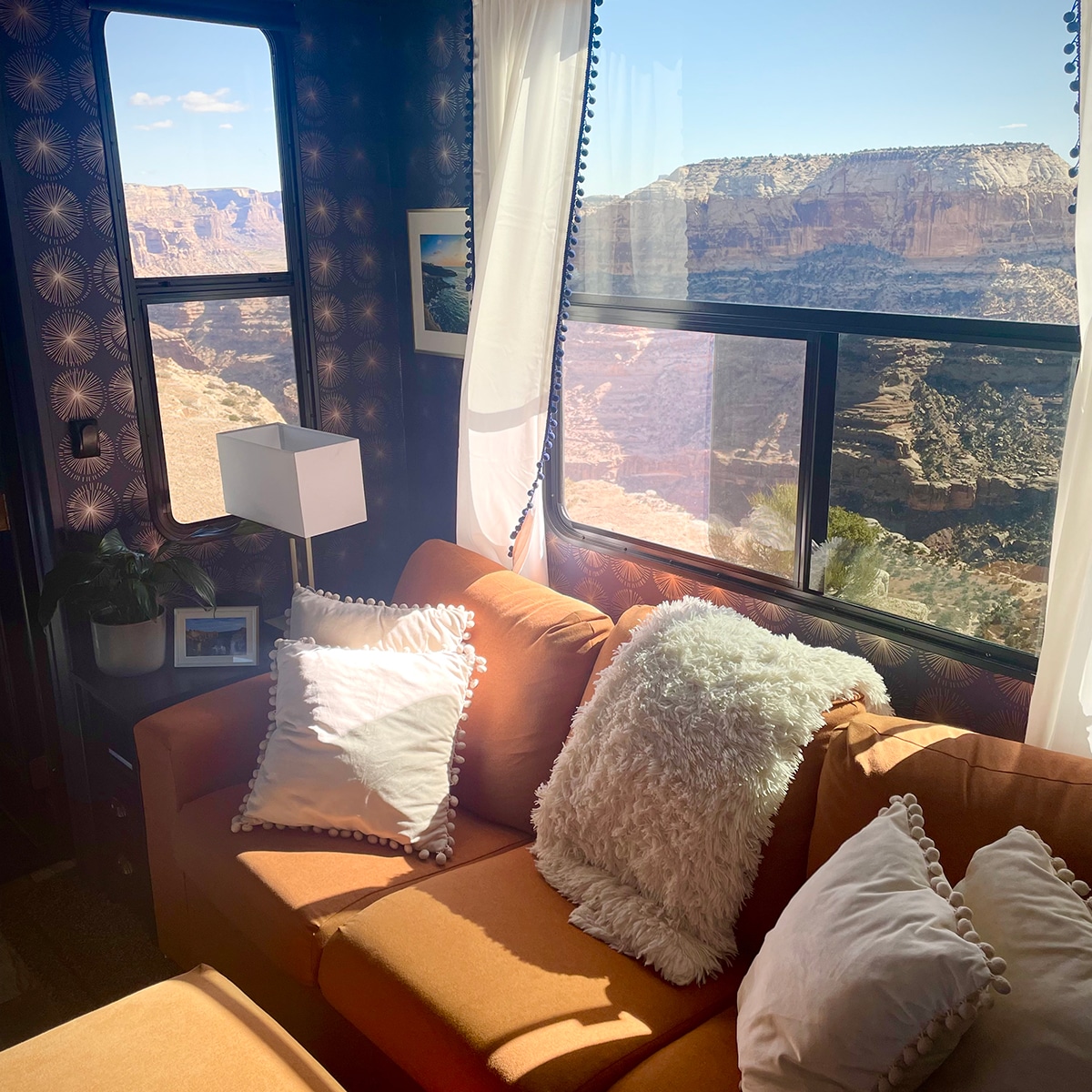
#5. Trusting my Intuition.
One of the things we like the most about full-time RV life is the variety of experiences it provides. We love being in a busy RV resort with paved roads and lots of activity one week and then traveling over miles of dirt roads to isolate ourselves on the edge of a canyon or deep in a forest the next.
Each campground and boondocking location has a different kind of energy… There are places in which we feel at home and others that we never fully relax into.
Deciphering those difficult-to-identify qualities that make a place feel like “us” is challenging, especially when we've never been there. There are certain tangible qualities that we’ve identified, but mostly I’m learning to trust my gut instinct.
For example, just this week I spent some time searching for a place to spend a couple of weeks somewhere halfway between Memphis and Colorado. New Mexico seemed the obvious choice and I found a state campground in an excellent location with many positive reviews.
While trying to choose a campsite, I noticed a sick feeling growing in the pit of my stomach. I don’t know exactly why, but I just don’t think we'll like it there. Rather than ignoring my instincts and pressing on, I moved on in my search and found a different option that I feel great about.
There is a quality of experience that’s similar in all the places we’ve loved and in all the places we’ve disliked. It’s not dependent on things like paved or unpaved roads, the geography and terrain, or how remote or central the location happens to be. It’s about how we feel being there.
It's about building the kind of intuition that's based on past experience and trusting it. (And having some self-compassion when it steers us wrong.)
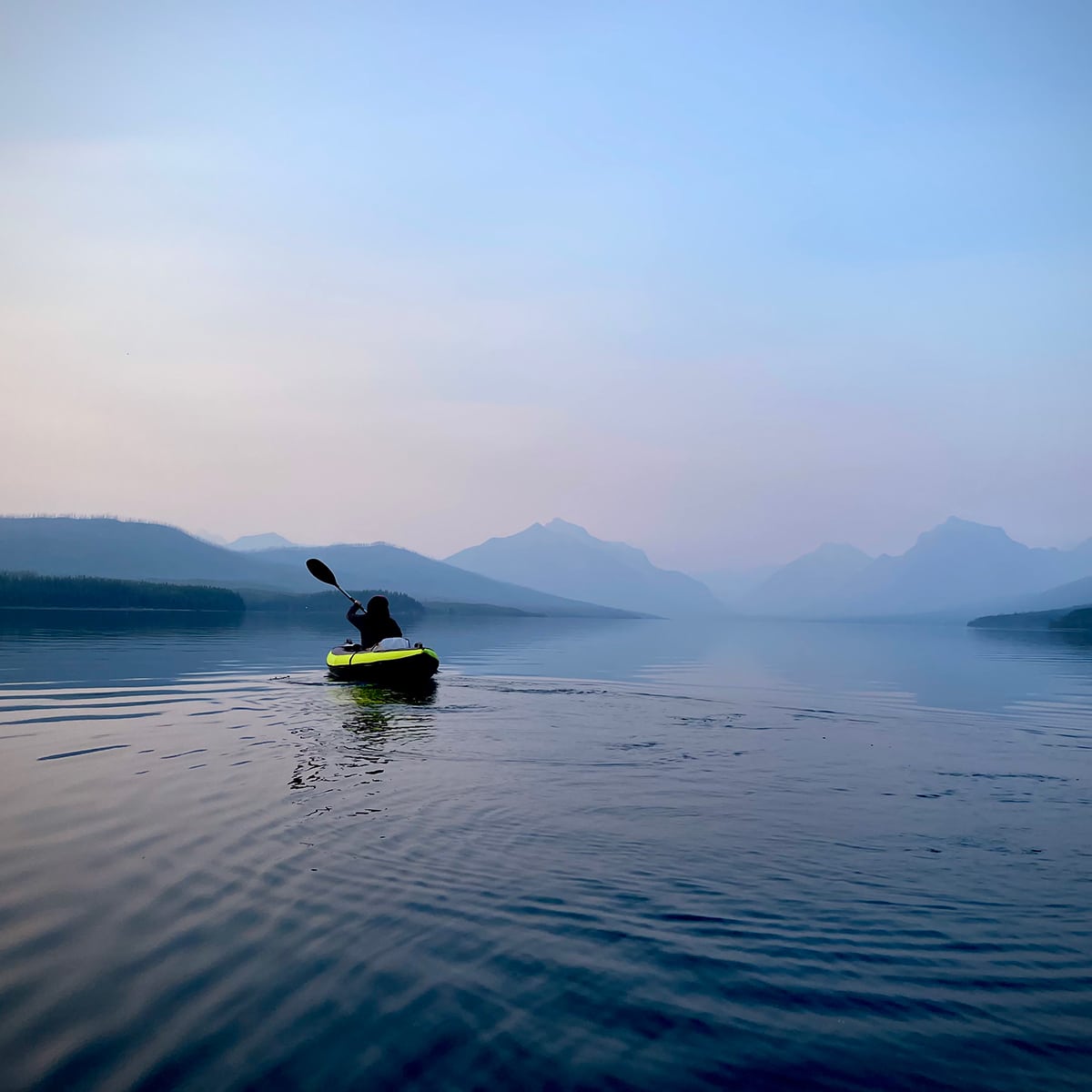
RV Travel Planning Tools and Resources
- Campendium. The bulk of my time searching for campgrounds and boondocking locations is done on Campendium. The information in the reviews from other RVers is pure gold.
- The Dyrt. Another user reviewed site with tons of campgrounds and other resources.
- Campsite photos. I use this site a lot when I'm trying to select a good space for us at a particular campground.
- Harvest Hosts. Harvest Hosts is a network of farms, wineries, breweries, restaurants, golf courses, and other businesses who allow RVers to park overnight. We've used Harvest Hosts many times while traveling across the country. In most cases it's a much better alternative to parking lots and rest stops.
- RV Dumps. A comprehensive nation wide map of dump stations across the US.
- Rootless Living. I've been a subscriber to this RV magazine since we moved into our RV, and this year I became one of their contributors. Over the years, I've gotten a ton of useful information from this magazine including travel tips and campground recommendations.
One Final RV Travel Planning Tip!
I keep a running list, organized by state, of campgrounds that we might want to visit someday. This list is a way for me to capture places that I see on Instagram, RV magazines, websites, and from other campers' personal recommendations.
Before adding a campground to my list, I do a quick check to see if it can accommodate a 43-foot trailer and if there is a reasonable expectation that we'll have a cell connection or Starlink access.
This way, I know that every campground on the list meets the two most important requirements for us.
Getting to Know Wisconsin
We arrived in Wisconsin on July 30th after 2 months in Michigan. Our first stop was Day Lake Campground in Chequamegon National Forest about 40 miles south of Lake Superior.
Our spot was isolated in the forest with a little path that lead to a dock on Day Lake. It was quiet and peaceful, and I kayaked on the lake almost every day.
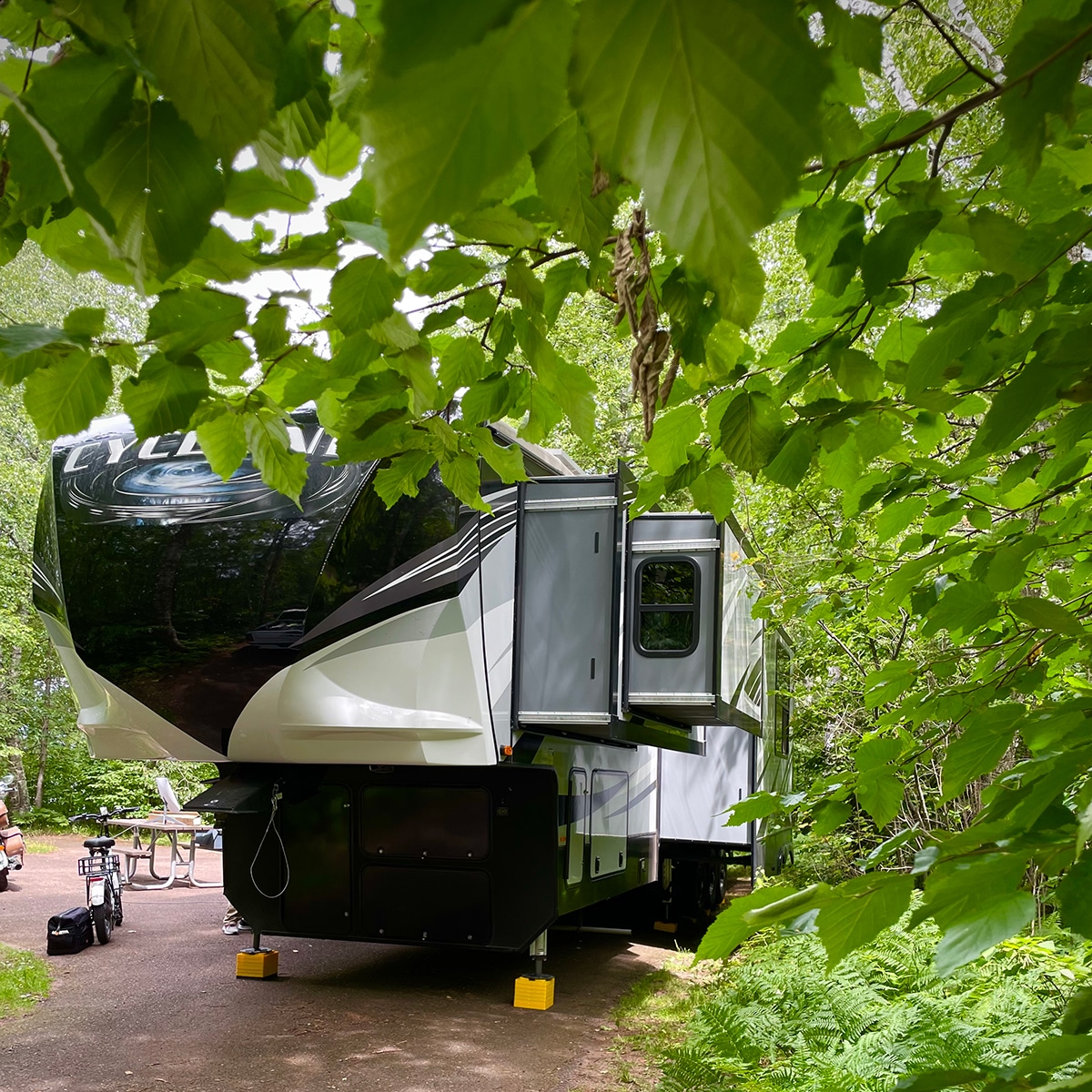
We also met some new friends while we were there thanks to a friendly 8-year-old who introduced us to her aunt, uncle, and mother and the campers two spaces down.
We spent a couple of evenings with our new friends and I even took the little girl and her friend out for a kayak ride. Her mother gifted me produce from her garden, homemade sausage, and homemade cranberry wine and the campers two spaces down gave me beautiful handmade pot holders.
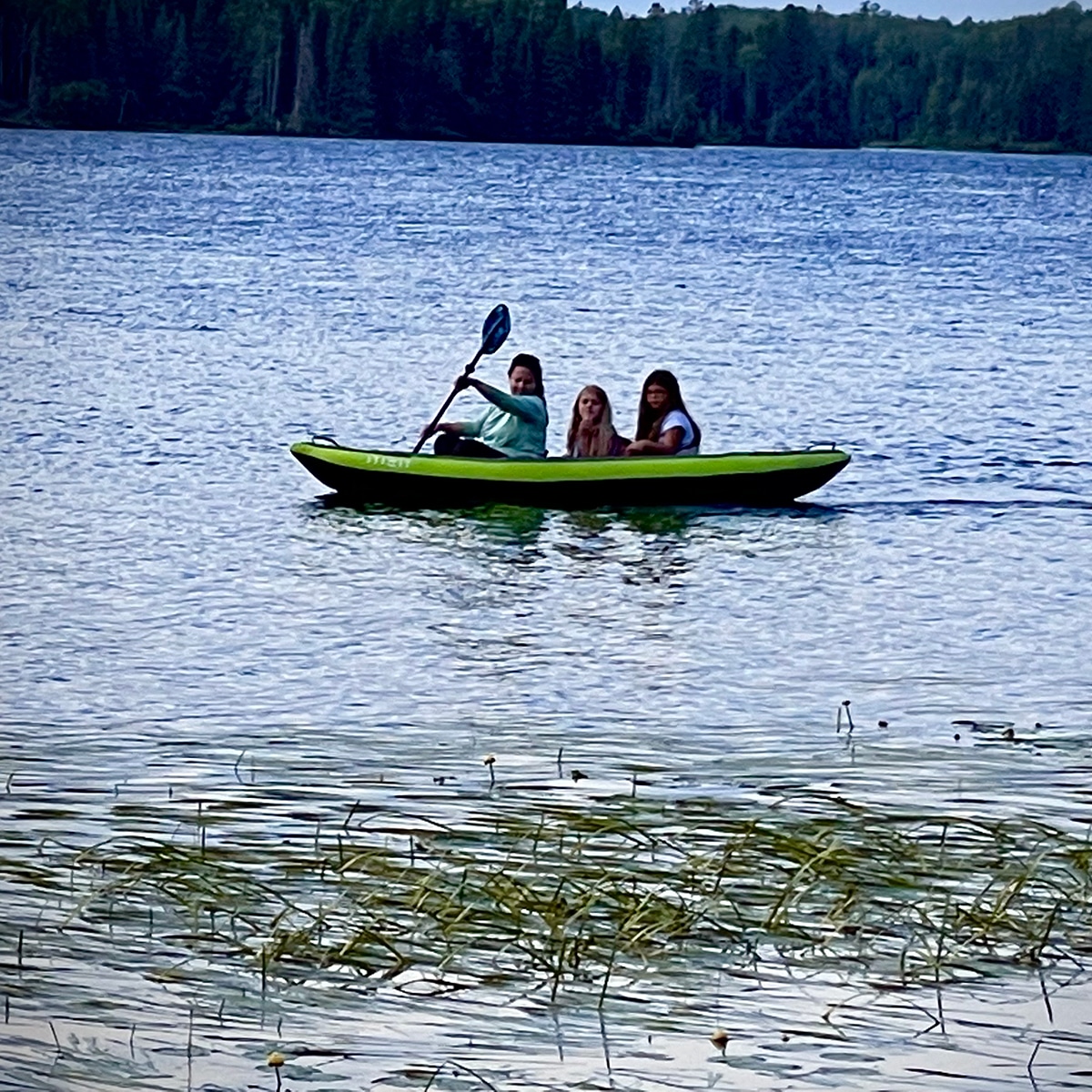
Life is funny. After spending months in busy campgrounds surrounded by people, we met new lifelong friends in an isolated campground in the woods.
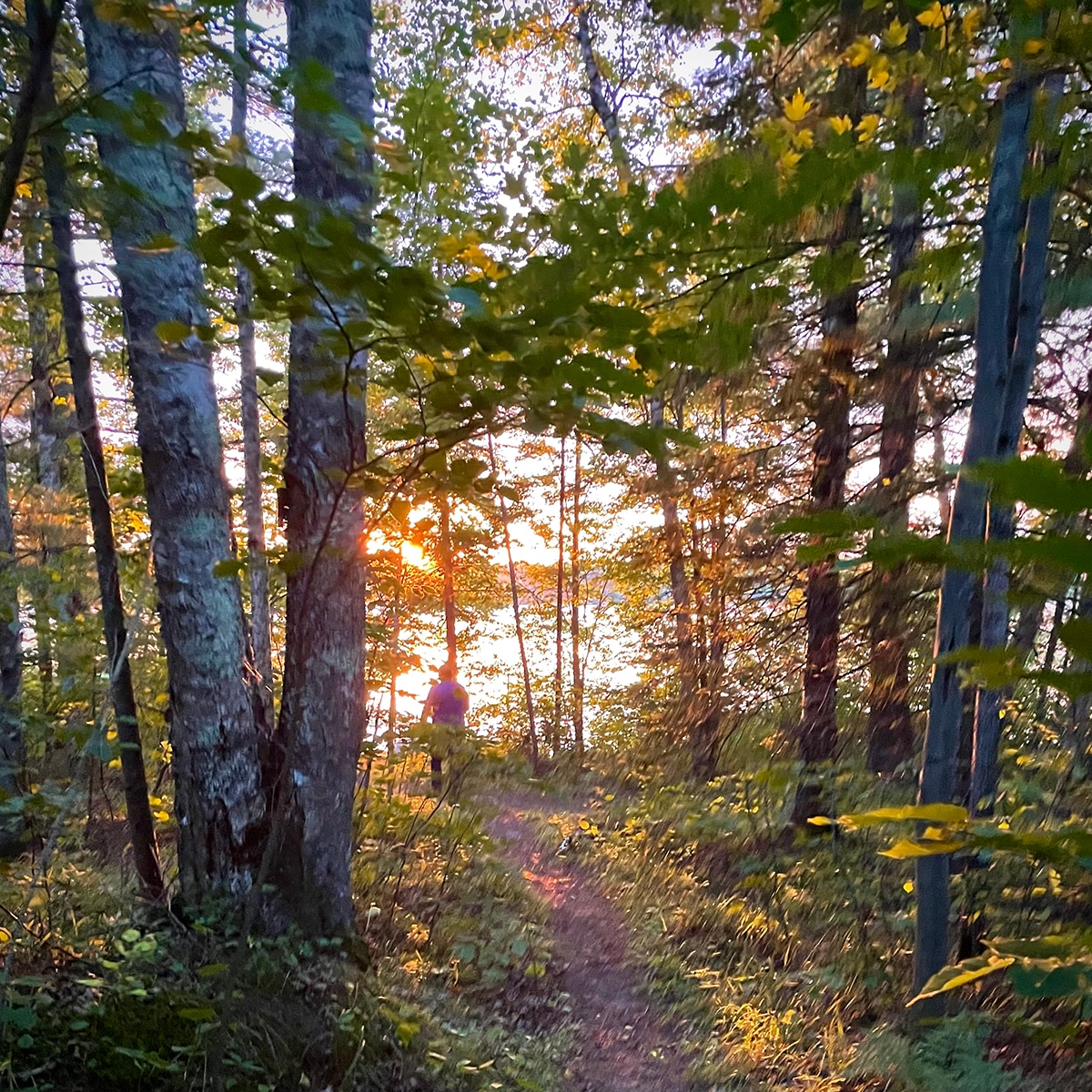
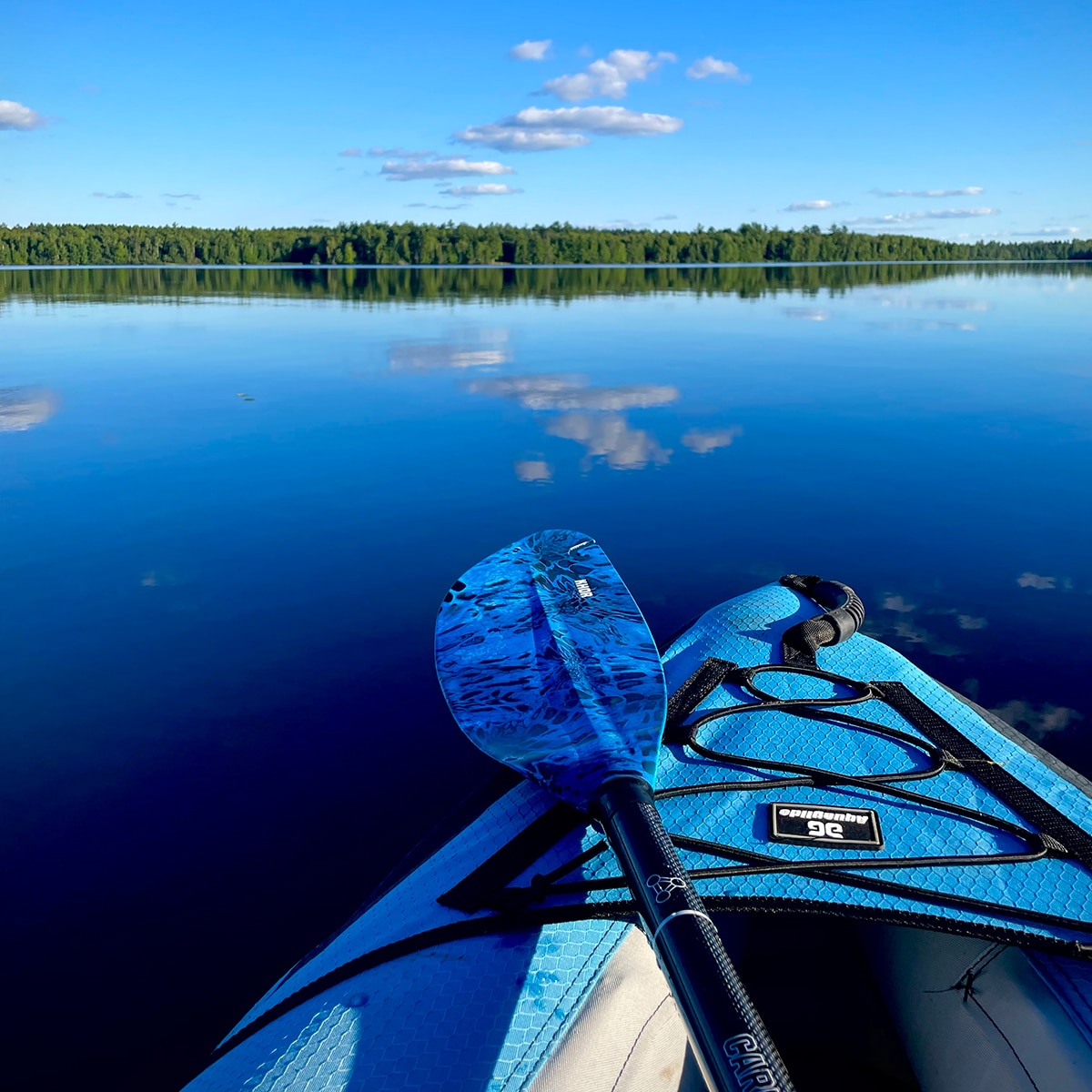
From Day Lake, we moved south to Wild Rose. We selected Wild Rose because it was centrally located to friends and family whom we wanted to spend some time with. Between Day Lake and Wild Rose, we learned a lot about life in Wisconsin!
9 Fun Facts About Wisconsin
- The friendly people of Wisconsin really enjoy frozen pizza. It is not unusual for small grocery stores and gas stations to devote an unexpected amount of real estate to the frozen pizza case. Also, there is an appliance designed with the sole purpose of cooking frozen pizzas and as far as I can tell, most people in Wisconsin own one. Or six.
- The Friday Fish Fry! Walk into any restaurant anywhere in Wisconsin on a Friday night and fried fish will be on the menu. The technique and recipe might differ from place to place, but the fish is almost always locally caught.
- Cheese! I have a special place in my heart for people who love cheese as much as the people of Wisconsin do. The first time we’d been in Wisconsin was several years ago on a motorcycle trip. We stopped for gas soon after entering the state. I went inside to buy water and found that half of the floor space in the tiny gas station convenience store was taken up by a cheese case. I think that’s when I fell in love with Wisconsin.
- Cheese curds! This deserves its own place on the list. The first time we’d ever had cheese curds was on the aforementioned motorcycle trip and we’ve been obsessed ever since. Not only will you find a variety of kinds of cheese curds everywhere (and I do mean everywhere), you’ll see them served up in every way you can imagine in every restaurant in the state. We ate at a restaurant in Madison where the waiter asked every table if they wanted some curds before even taking their drink order.
- Bar dice. Walk into most Wisconsin bars and you’re likely to see patrons playing bar dice. Customers play against each other (and the bartender) for shots and/or a chance to win the money that’s been collected all day in the pot. The rules vary from bar to bar, but in most places when the bartender loses everyone in the place gets a free round.
- Bar culture. Bar dice may not be exclusive to Wisconsin, but it’s a much bigger thing here because bars are a big thing here. From bigger cities to tiny towns, local bars are a part of the community. While we were here we learned that 41 of the 50 drunkest counties in the US are in Wisconsin. These people know how to drink. 😂
- Everyone has a boat and everyone knows how to fish. Ok, that's probably not 100% true, but it seems true. Wisconsin has a LOT of lakes. Like 15,000 of them. Also, there’s Lake Michigan. Boating and fishing are what you do here.
- Hunting is a big deal. Here’s a fun fact for you: “If all of the hunters on opening day of deer season in Wisconsin were grouped together, they would comprise the sixth largest army in the world.” 😳
- Why Wisconsin is known as The Badger State: In the early 1800s, Wisconsin miners lived in temporary caves that they cut into the hillsides. The caves were described as badger dens. Likewise, the miners who lived in them became known as badgers. The name was eventually applied to everyone in Wisconsin and in 1957 the state adopted the badger as their state animal.
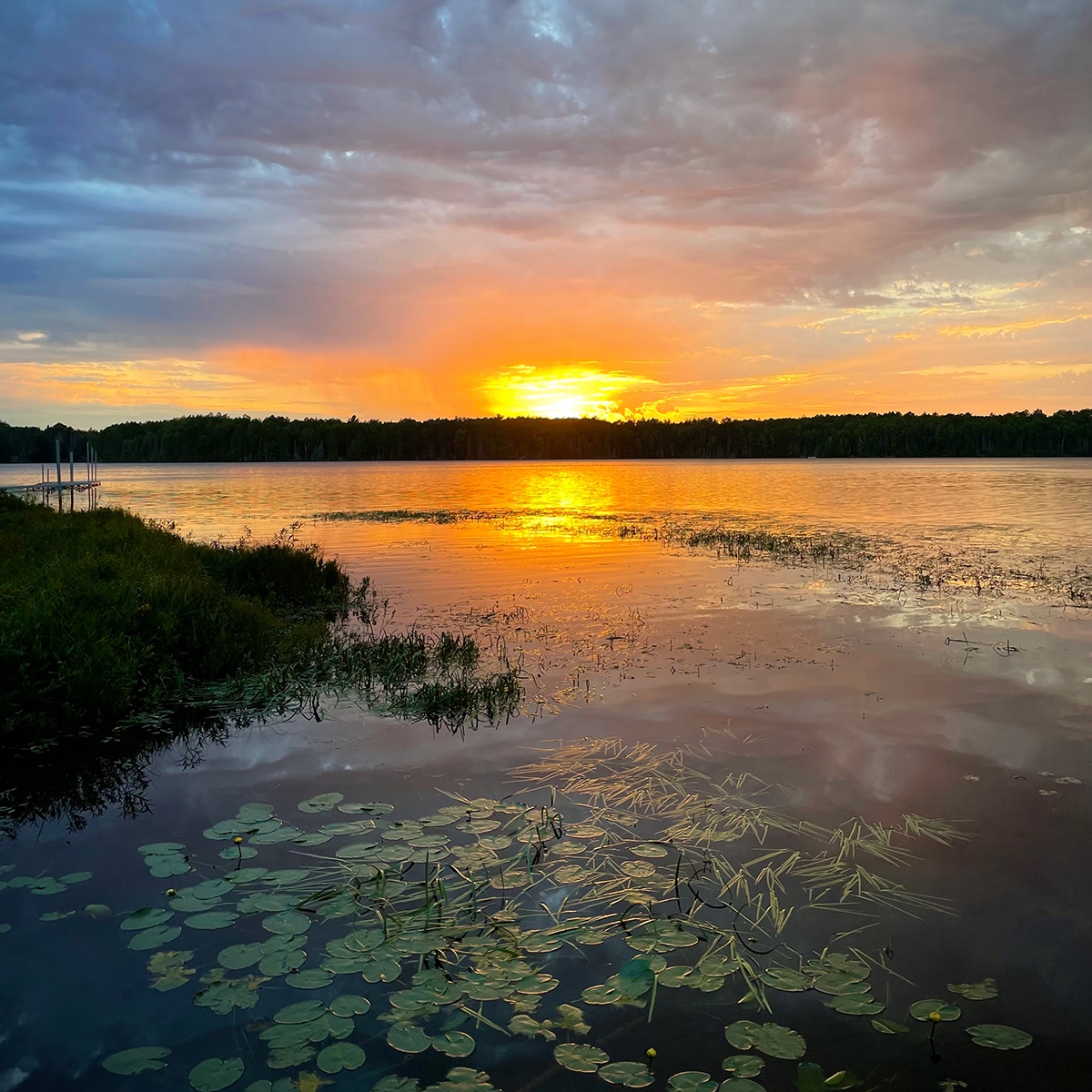
What did we miss? Are you from Wisconsin or spent enough time here to know a fun fact or two that we missed? Let us know in the comments!

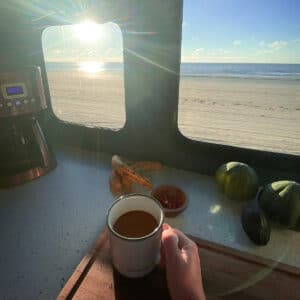
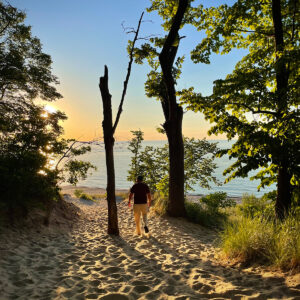
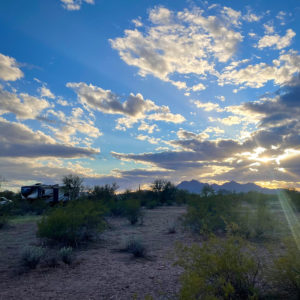
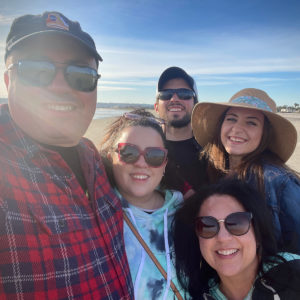
Christine says
This is incredible! Just missing a tatertot hotdish served with a lite beer, and you've got all the best parts of wisconsin!
RebeccaBlackwell says
Ahhhhh! Yes! I was digging to find a 10th fun fact and totally forgot about hotdish and lite beer. Next month will be all about Wisconsin as well, so perhaps I'll start a new list. 🙂
Janet Claxon says
Love keeping up with you two! Door County is one of our favorite places. Spent a lot of time there with family in time share at “The Rushes” on Kangaroo Lake. Lives change and sadly we haven’t been back for many years.
I grew up in Watertown, WI between Madison and Milwaukee. Home of the First Kindergarten of the US. On the Octagon House property ( my neighbor). One amazing place in Wisconsin is The House on the Rock.
I don’t get back to the beautiful state of Wisconsin but it was fun hearing that your adventures took you there.
You do an excellent job keeping informed with tips, locations, and delicious recipes.
Hugs, Janet Claxon
RebeccaBlackwell says
Hi Janet! So happy to hear from you! I can envision us returning to Door County many times... we've only spent a week here so far but are completely enamored with the place. I didn't know the first kindergarten was in Wisconsin! We really wanted to go to The House on the Rock when we were closer to Madison but ran out of time before we could get there. I'll make it a top priority the next time we make it here. Thank you for all the kind words and for taking the time to leave a comment for me! I truly appreciate it! xo